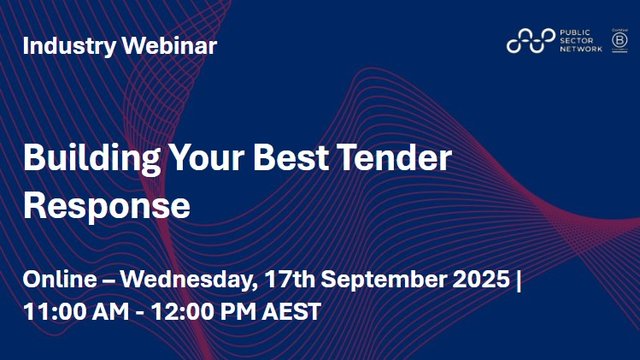Government Keynote:
Building a Workplace Culture with Embedded Well-being

At our first HR & Future of Work National Insights Virtual Event, Paul Wilding, Director of Employee Relations, Department of Education explored:
- Understanding how a wellbeing focus can lead to organization-wide improvements
- Using alternative ways of working via role design, technology, and innovative thinking to support wellbeing
- Building mental health and wellbeing into everyday policy and practice
The challenge of indivisualising wellbeing
Since the start of the pandemic, in particular, the concept of well-being has been bandied about across all levels of the media, the government, and the community. But why is it important in a workplace context, and how should it be applied? These are some of the questions that have been bothering Paul Wilding, the Director of Employee Relations at the Department of Education in Western Australia. In a word, he says that well-being “is really about flourishing. It is about being comfortable, healthy, happy, feeling well and well connected, having good physical health, financial stability, a good mood, good family circumstances, and a good social life.” Not all of these things are required to have good well-being, but all of them contribute to it. Most importantly though, the one thing that is key is “having potential, or having some control over one’s life and having a sense of purpose.” In a work sense, in particular, this means feeling “safe, healthy and pleasant,” and for HR or other managers, it is about “focussing on those preventative actions that reduce the incidents of stress, injury or feelings of being overwhelmed.”
At the Department of Education in WA, this comes from understanding the employees and having years of experience with HR. The Department looks after “800 independent schools spread across the biggest state of Australia, with 40,000 FTE staff, 320,000 students, and a $3.8 billion net cost of service.” Till now COVID-19 was essentially at bay, but in early 2022 it has finally arrived “so we are dealing with that in about 500 of our schools.” However, both before and during the pandemic, it became clear that with so many schools, students and staff, it was not possible to please everyone, so there is always an HR balance between “organisational systems versus individual outcomes. We can’t address the individual issues of every employee in a well-being sense, so we have to establish organisational systems that need to be clearly defined.” In a workplace sense, this means looking after a number of issues, sometimes simultaneously:
- Information – “One of the biggest issues we all face is that there’s just too much information.” Social media feeds “are full of pictures of people on yoga mats telling us what the secret to well-being is.” This can be distracting. What is needed instead “is to move beyond those modes of communication by talking about well-being as a practice of HR.”
- Hard vs Soft – In that sense, “HR is either hard or soft.” Hard refers to the “things we have to deal with on a daily basis,” from workers comp and injury management to bullying and physical health conditions. Soft on the other hand refers to the “things that create a sense of purpose,” from healthy eating to stuff on the internet. “We need to get that balance right but often we are not good at that.”
- Mental vs Physical – Overall well-being is really about both the mental and physical health of a person, but in recent years and since the pandemic, “physical has well and truly been overtaken by mental health concerns.” This is not necessarily a bad thing, since “many things are related to the psychological well-being of staff,” but again, “there needs to be a balance there.”
- Traction vs KPIs / small step improvements vs a revolution – “The greatest way to be ignored as an HR practitioner in the well-being space is to put lots of words into a strategy that doesn’t deliver a thing.” For instance, the simple step of giving everyone a laptop or a tablet rather than a desktop – even if they are expected to work in the office – gives staff a sense of flexibility and an expectation that they are not bound to their desks. “These sorts of things are much more important than some of the grandiose ways of thinking.”
- Real data vs interest groups – Real data should dictate practice but often it doesn’t. As an example at the Department of Education, there are many cases of staff slipping and falling, “or being hit with a flying object.” But preventing those incidents is often “eclipsed by those groups of individuals who may have a greater presence. As such, there is usually an emphasis on the school principals and their well-being within the school system to the detriment of looking after the real injuries in schools, and their causes.”
- The OSH approach – Occupational health and safety are clearly important, but often there are too many standards or rules that come with following that approach too closely, and thus well-being often misses out. “I would suggest that rather than focus too much on the KPIs, you should look at the individual outcomes that you want to create.”
Embedding well-being
“It is fairly obvious that the aim of a well-being focus is to go beyond these initiatives.” Whilst any focus on well-being should be in addition to BAU (business as usual), it should also go deeper. For instance, for well-being to truly be embedded into the DNA of an organisation, the focus needs to be “clear, realistic, with improvement targets and champions.” This means “asking your people and creating corporate plans and expectation documents.” It also means getting everyone involved, from the Secretary and Director-General down, and it means “every process should have a well-being element.” It may not be issued as a directive or a requirement, but every process should have a well-being question attached to it. “You’re not going to fit well-being into every project or every program, but you should at least consider it.”
The ongoing matter when it comes to well-being is that individual issues don’t always translate into the communal and thus don’t always fit with the workplace. But the key to embedding well-being is to link the two elements together.

“The important thing is that the needs of the individual can also serve the needs of the organisation, and positive emotions in groups of employees lead to a good workplace culture.”
As part of that, it is necessary for any workplace “to create achievement, a sense of belonging and ownership. One of the greatest tenets of good mental well-being is the building of connections which then results in partnerships at work rather than just a group of individuals simply turning up for a wage.” This means creating ways of working that are aligned with the desires and requirements of the individuals. For instance, though remote working became the norm during the pandemic, it is now about “leveraging the things that we learned on the run to deal with the pandemic, and making alternative working a success for the longer term.” This means not just allowing staff to work from home, but “using different technologies and going right back to the basics of working out what work is required and then wrapping your people and processes around that.” It might mean having more virtual conferences, but also having more “catch up lunches where we actually talk to each other.” It might also mean that rather than people turning up and being at work just to be present, “splitting up their work during a day at home, or having video conferences or whatever degree of hybrid work, and sometimes with interruptions in the background.”
Ultimately, the purpose of flexibility is to give employees “the option of alternative arrangements without giving up on productivity.” This keeps the employees happier and mentally healthier, but it doesn’t just happen by itself. Employees need to be aware of the employment assistance programs and need to know “where to go for specific problems,” be they physical or mental. Sometimes it is also about having specific apps or other kinds of programs to assist employees. At the Department of Education, the app of choice is Thrive at Work, designed with Curtin University, “which has been very useful to fulfil a number of niche elements and areas for us, and has resulted in some good outcomes for our staff of dealing with issues.” Like many other things, this program and programs like it are in place to “give people and managers the tools and packages they need so they will be less reliant on HR.” That way it will be obvious that well-being has truly become embedded into the organisation.



































